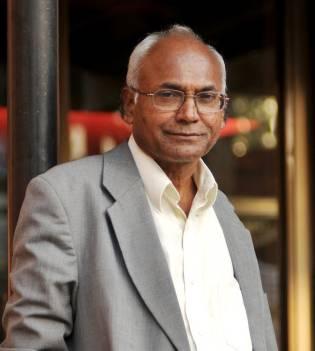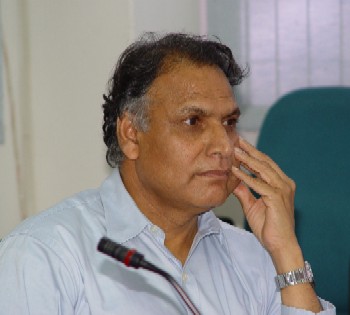Kancha Ilaiah
 Rape has, of late, become an acute disease in the Indian society. Prima facie, this is a problem arising out of a mental disorder, but there is also a larger cultural context that, to an extent, explains how the Indian male became so brutal.
Rape has, of late, become an acute disease in the Indian society. Prima facie, this is a problem arising out of a mental disorder, but there is also a larger cultural context that, to an extent, explains how the Indian male became so brutal.
Our cultural upbringing conditions male minds to behave in a cruel fashion with women. Family upbringing, societal conditioning, religious sagas and political animus, all construct our men and women into being what they are — men as aggressive and women as submissive. Which is why men here, in India, are different from men in other countries.
Their cultural milieu is different. Their spiritual systems train them differently. It’s not that only Indian men rape and kill children aged three or five. This happens in other countries too, but they are the rarest of rare cases. Daily reports of infants being raped across the length and breadth of a country is a phenomenon unique to India, a society that’s otherwise highly conservative. Clearly, the institutional upbringing, including that in family, needs to undergo change.
Every time a gruesome rape gets reported, we all are ashamed and angry. That’s one thing; but working out ways and means to eradicate such evil is another thing. We cannot leave it entirely to the police or the judiciary to tackle such heinous acts. For, rape is also a cultural problem; and it is a more serious problem because of the extermination of the victim. We need to treat the malaise from its very roots.
We are a society that derives its sense of good and bad from our mythologies and spiritual ethics. Our gods and goddesses are not only worshipped but also adored. And it is our lifelong endeavour to emulate them. This is the cultural environment that shapes the lives of most people in India. So it’s natural that what gods do influences us much more than the moral lesson at the end. Now consider this: we have gods who, for instance, have cut the nose and ear lobes of a woman who approached them professing her love (Lakshman is depicted as having done this to Shurpanakha), and yet we adore him and see him as a symbol of loyalty, sacrifice and righteous indignation.
Lord Krishna stole the clothes of women while they were bathing in the Yamuna river. He did so to tease them and for the pleasure of watching the beauty of their naked bodies. We hang miniature paintings of the same act in our homes proudly. The young men who grow up seeing this, or listening to the story told in an amused tone are bound to not find such an act abhorrent.
We also have a god, Shiva, who insisted on entering the bathing arena of Goddess Parvati and did so by eliminating a child who was keeping guard at the open door. Lord Ganesha is said to have emerged out of such a union. Is this right or wrong? Our mythology tells us that what a husband does is right, that his will is greater than the woman’s. If a mythological hero is praised for his acts of killing, drinking and fornicating with multiple women (like Indra did with Rambha, Urvashi, Menaka, Tilottama and so on), it is glorification of such behaviour.
When such stories are a part of the mythological texts, they should, at least, be critically evaluated and given a more contemporary, political reading which is rooted in the concept of equality. Instead, the tendency is to not question what our gods did, but simply admire such acts.
Barring a few exceptions, there is no appreciation, per se, of a healthy man-woman relationship which is rooted in the concept of equality. Indian women are shown as lathangi (a person of delicate body), never strong enough to resist her dehumanisation. Though Durga and Kali are shown as strong, in real life such militancy is not seen as feminine.
Now let us turn to the political spectrum. We have had many great men — Mahatma Gandhi, Jawaharlal Nehru, Sarvepalli Radhakrishnan etc — who got married at a young age with girls of much younger age, went abroad for higher studies, leaving their wives at home totally illiterate or semi-literate. We do not know how these men, or Gokhale and Tilak, treated their wives.
But we know that they were all devotees of the deities mentioned above. The only man who treated his wife as a friend and educated her right from the first day of his marriage, Mahatma Jyotirao Phule, is not taught as an example to be emulated in our texts. Somehow, in our patriarchal cultural milieu, unkind and inhuman treatment of women has never been a matter of concern. It’s considered sacrilegious, for example, to question Lord Ram for leaving his dutiful wife on the random outburst of a dhobi.
And Sita’s action, in turn, to not question, but to commit suicide, is considered the epitome of all that is pious. Even Gautam Buddha left his young wife, with an infant child. Questioning such acts has never been part of our public discourse.
Or, look at our cinemas. Ever since the industry came into being, silent or talkie, it has used woman’s body as a money-making object. The song and dance sequence that it has adopted as an art form falls into a common pattern — every hero is licensed to misuse the body of the heroine. The romance in our film industry is not romance; it is vulgarity bordering on the criminal.
So is it a surprise that men of this country see it as their right to violate women in all spheres of life?
The writer is director, Centre for the Study of Social Exclusion and Inclusive Policy, Maulana Azad National Urdu University, Hyderabad.
~~~
[Courtesy: Deccan Chronicle, May 10, 2013]









